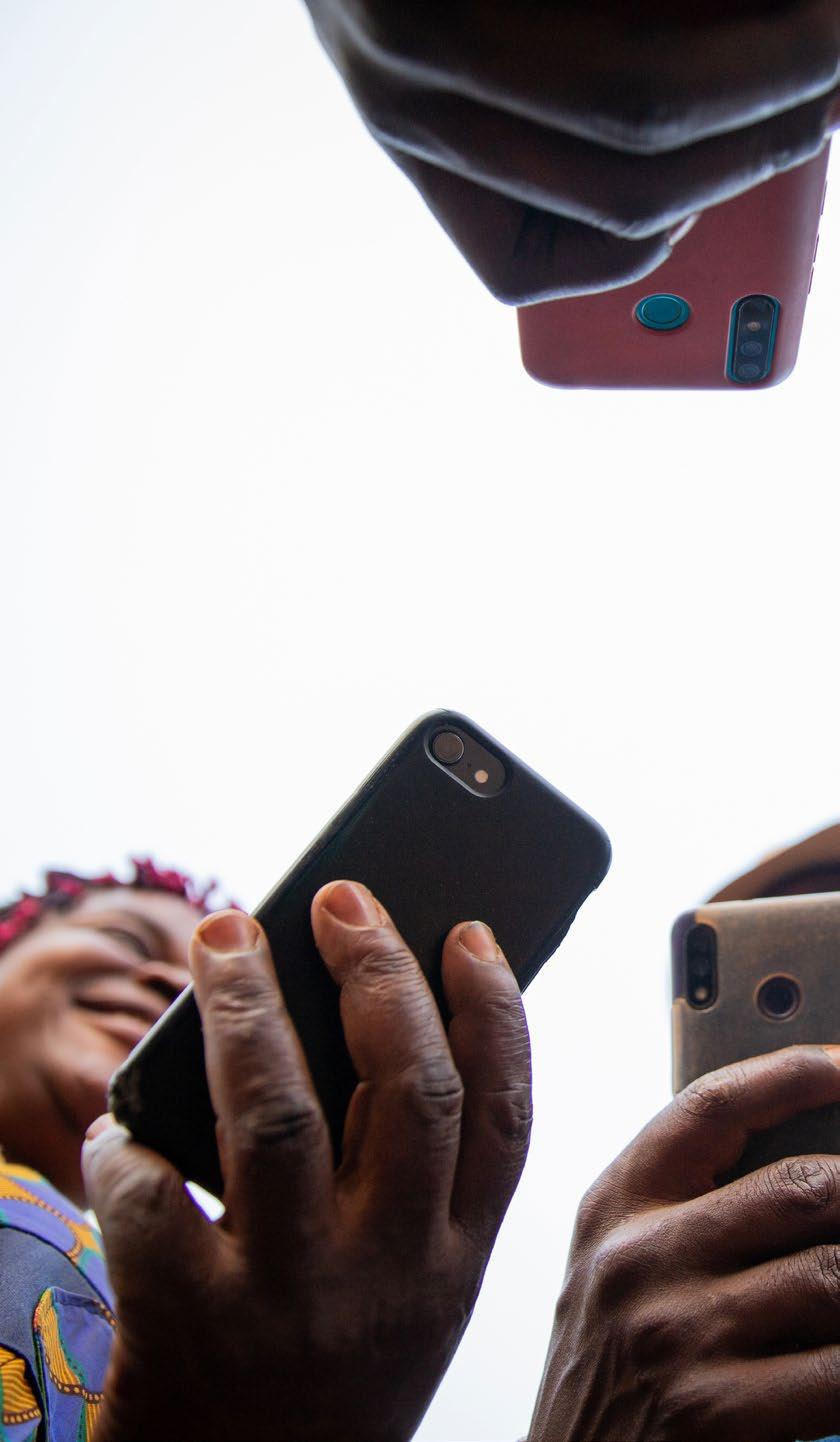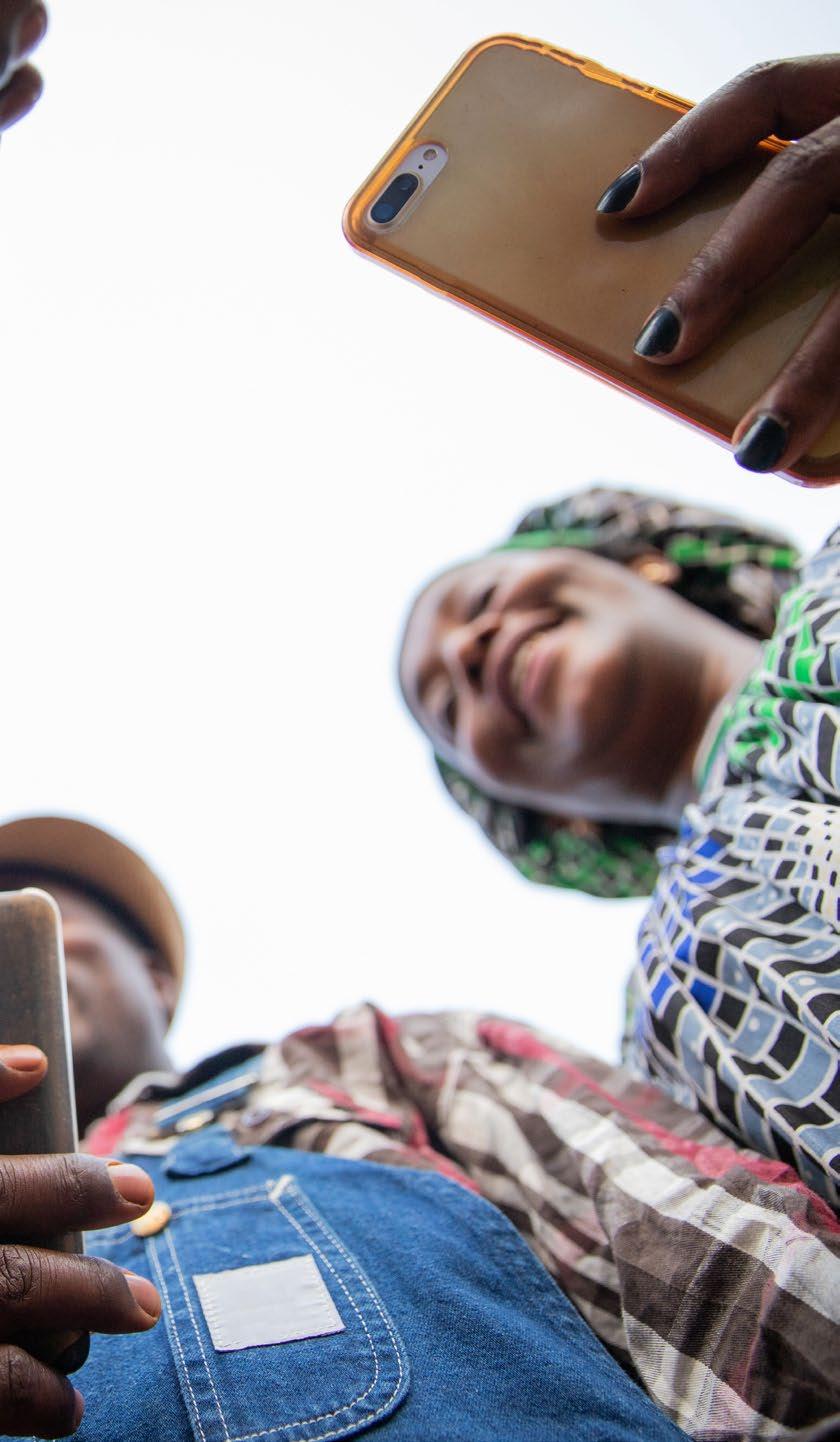
7 minute read
IMPLEMENTING OPEN BANKING IN AFRICA CHALLENGES & OPPORTUNITIES
Open Banking is a financial system in which banks and other financial institutions make certain data about customers’ financial transactions and account information available to authorized third parties using Application Programming Interfaces (APIs). This enables customers to securely share their financial information with other companies, such as fintech firms and financial service providers, in order to access new and innovative services such as budgeting tools, comparison websites, and financial advice. The goal of Open Banking is to increase competition in the financial industry and give customers more control over their financial data.
Open Banking is still in its early stages of development in Africa, but there are some initiatives underway to introduce it to the region. For example, the Central Bank of Nigeria has been working on a regulatory framework for Open Banking, and there have been several pilot programs launched to test the concept. Others with similar exercises include the South African Reserve Bank, the Central Bank of Kenya, the Central Bank of Ghana, the Central Bank of Egypt, etc. all of whom have issued guidelines for open banking in their respective countries, and several banks have begun implementing open banking APIs. Additionally, there are some fintech companies that are working to enable open banking in Africa by building infrastructure and platforms for data sharing. However, due to the lack of standardization and regulations across different countries in Africa, open banking implementation can vary a lot among different nations. In addition, most African countries have low penetration of banking services, low technological literacy, and underdeveloped infrastructure, which are challenges that need to be addressed to make open banking possible.
Advertisement
Some Models for Implementing Open Banking
There are several different models for implementing Open Banking, each with its own set of advantages and disadvantages. Some of the most common models include:
Direct API Access: This model involves customers giving third-party providers direct access to their financial data using APIs. This allows the third-party provider to access a wide range of data, but it also carries a higher level of risk as the customer’s data is being shared directly with the third party.
Account
Information Service Provider (AISP)
Model: Under this model, third-party providers act as intermediaries between customers and their financial institutions. The AISP has the customer’s permission to access account information on their behalf and provides the customer with a consolidated view of their financial data from multiple accounts. This model can provide a higher level of security as the customer’s data is only shared with the AISP, not directly with other third parties.
Payment Initiation Service Provider (PISP) Model: This model allows third-party providers to initiate payments on behalf of the customer directly from their bank account. This can be useful for services such as online shopping or bill payments, but it also carries a higher level of risk as the customer’s bank account details are shared with the third party.
Hybrid Model: This model is a combination of the AISP and PISP models, which allows the customer to share their financial data and initiate payments through a single third-party provider. This can be more convenient for the customer, but it also increases the risk as the customer’s data and bank account details are shared with a single third party.
Sandbox Model: This is a simulated or closed environment to test open banking solutions or new fintech products. This allows the parties involved to test and validate the solutions before the official launch, with less risk. Many African countries
(who are currently exploring Open Banking) can be found here.
These are just a few examples, and other models may also be used depending on the specific requirements of a particular market or jurisdiction.
Challenges for Implementing & Scaling Open Banking in Africa
There are several challenges to implementing Open Banking in Africa, some of which include:
Lack of regulatory framework: There is a lack of standardization and regulations across different countries in Africa, which makes it difficult to implement Open Banking. This could also lead to confusion and mistrust among customers and providers.
Lack of infrastructure: Most African countries have underdeveloped infrastructure, which can make it difficult to securely transmit and process large amounts of financial data.
Cybersecurity concerns: Sharing financial data through APIs and other digital channels can increase the risk of data breaches and cyberattacks. This is a concern for both customers and financial institutions, as they need to ensure that their sensitive financial data is protected.
Limited banking services: Most people in Africa have limited access to banking services, low technological literacy, and low income. This can make it difficult for them to access and use the new and innovative financial services enabled by Open Banking. Limited access to financial data: Many banks and financial institutions in Africa have limited access to customer data due to a lack of IT systems and processes in place. This makes it more difficult for them to participate in Open Banking initiatives.
Low Level of Trust: Due to historical corruption and issues with financial institutions, there is a low level of trust in financial institutions and other service providers. This can make it difficult to get customers to share their financial data.
Addressing these challenges is key to making open banking possible in Africa and bringing benefits to end-users, financial institutions, and the economy. It is instructive to mention here that some of these challenges are at different stages of being addressed by different stakeholders across several markets in Africa. For instance, many fintechs are emerging across the continent and are tackling the challenges of deepening financial services by customizing and curating several VAS offerings and making them available and accessible to consumers. Moreover, many African governments have either issued or are in the process of issuing regulatory frameworks for open banking operations, the Consumer Data Protection Laws and Regulations, and similar laws to address some of the challenges listed above.
The Future Of Open Banking In Africa
Despite these challenges, many enthusiasts have predicted that open banking will gain momentum in Africa in the coming years as it has the potential to bring several benefits to the region, including increased financial inclusion, greater competition, and improved access to financial services.
One of the major drivers for open banking in Africa will likely be the increasing use of mobile technology and digital financial services, which are already being used by many people in the region. The use of smartphones, mobile money, and digital banking services is on the rise across Africa, and this trend is likely to continue in the future. This can provide a solid foundation for open banking to be built on.
Another important factor is the increased focus on financial inclusion and digitization by governments in Africa. Open banking can help to achieve this by providing more financial services to more people. This can be especially important in Africa, where many people do not have access to traditional banking services and are therefore excluded from the formal financial system.


It is my belief that open banking can serve as an accelerator for deepening micro-credit access in Africa and delivering the scale that the micro-credit segment is in dire need of. I have captured my views in this regard in the last section of this article. Overall, the future of open banking in Africa looks promising, but the journey ahead may be challenging. It will require collaboration, investment, and effort from all stakeholders. If these challenges are addressed, open banking has the potential to bring real benefits to the region.
Leveraging Open Banking to Deliver Quick Wins in the Micro-Credit Segment in Africa
The EFInA micro-credit survey of 2018 indicated that only 5% of the 33% of the borrowing adult population in Nigeria use formal credit products, 18.1% use informal credit channels such as moneylenders while 76.3% rely on family & friends. This portrays that many adults are unable to access unsecured credits from their banks as many of these banks are unable to expand their credit net beyond those 5% who are either fully or partially banked with them, wherein the KYCs of these customers are available for potential credit scoring and analysis. This is despite the pressure from the regulator compelling many of these banks to meet the Loan-to-Deposit Ratio (LDR) requirement. Perhaps, this is a gap open banking can quickly fill.
Open banking has the potential to help deepen microcredit in Africa by providing financial service providers with more information and data on potential borrowers. By sharing financial data through APIs, financial service providers can gain insight into customers’ financial history, income, and expenditure, which can help them make better-informed lending decisions.

This can make it easier for individuals and small businesses who lack traditional credit history to access credit, as well as reduce the cost of assessing the creditworthiness of borrowers.
Open banking can also help to increase the availability of microcredit by making it easier for financial service providers to reach more customers. By using data from multiple sources, financial service providers can gain a more complete view of their customers’ financial situation and offer targeted products and services.
Additionally, Open Banking enables the use of innovative technologies, such as credit scoring algorithms, which can help to increase the efficiency and reduce the cost of assessing the creditworthiness of borrowers, thus making microcredit more accessible for more people. Furthermore, Open Banking enables the use of digital platforms, such as mobile money, to reach customers who are not yet connected to the formal financial system, thus expanding the reach of microcredit.

However, it is important to consider that Open Banking alone may not be enough to solve the problem of limited access to microcredit in Africa. There are other factors, such as political and economic instability, lack of trust in financial institutions, and lack of access to financial education, that can make it difficult for microcredit to reach its full potential. Therefore, Open Banking should be seen as one tool among others to help deepen microcredit in Africa.
AZUKA MORDI is a digital commerce and payments services subject matter expert with over a decade of experience in the financial services industry – spanning Fintech (with eTranzact Int’l PLC); Banking (with Access Bank & FirstBank of Nigeria); Cards & Payment Technology (with Mastercard) –and currently, he is in the Financial Services Advisory Consulting team of PwC Ireland where he oversees Digital Banking and Solutions.










